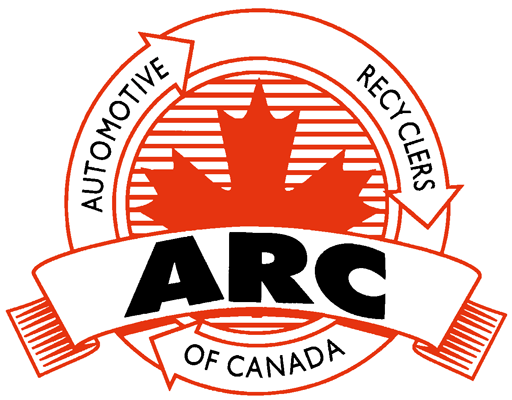That tired, old car heading for the scrap yard may not have the allure and smell of a shiny new car on the dealer’s lot, but it’s got a future just the same.nnNot only will it generate many times its street value of $200 to $300 in parts and scrap, but between 75 and 85 per cent of that car will end up being recycled, and manufacturers are working with researchers to bump that figure even higher.nnToday’s cars are built with many parts already made from recycled materials, which can be recycled again and will help divert millions of tons of waste from landfills.nnEach new Ford Fusion, for example, has about 39 clear plastic water bottles (partially collected from Ford’s own offices) recycled into its seat covers, 31,250 soybeans in its seat cushions and a couple pairs of denim jeans shredded into a soundproofing material (called “shoddy”).nnThe Ford Flex has a wheat-straw-reinforced storage bin, part of a plan to expand the use of bio-based materials, using locally-sourced stalks from six Ontario farmers.nnIn 2010, Chrysler went one step further with a process that chemically decomposes urethane foam into a base component: polyols. Parts maker Magna then mixes it with virgin materials to reconstitute it as foam for seats and soundproofing. Chrysler says it’s diverting tens of thousands of pounds of foam from landfills.nnUsing plants to make plastics is nothing new: Henry Ford unveiled a 14-panel plastic-bodied car in 1941 made from a formula containing soybeans, wheat, hemp flax and rami (an ancient vegetable fibre). He’d started 20 years earlier with Fordite, a concoction of wheat straw, rubber, silica and other compounds to make steering wheels.nnFord wanted to tie America’s agricultural power (and the produce of his own farm) to its industrial force and to look for alternatives to steel, which was in short supply when World War II was being fought in Europe. Although Ford’s car was 1,000 pounds lighter than steel-bodied cars, it never went into production.nnThe current trend is being driven by two forces. First, petroleum-derived plastics and materials are getting more expensive as the price of oil rises. Second, closed-loop systems (which recycle any production waste back into the manufacturing process) cut costs.nnThe other factor is consumers, who are much more eco-conscious but remain price sensitive.nnManufacturers are working with universities and research centres to create more-sustainable materials — such as the Ontario BioAuto Council and the University of Windsor’s Auto21. The trick is to not just make materials that are environmentally friendly but to also ensure they can be recycled later.nnThe goal is to help manufacturers make design decisions that will not only pay off in the form of lighter, cheaper and more-sustainable vehicles but will also yield more recyclable or reclaimable parts and materials.nnBut improving on the 84 per cent that gets recycled from the average vehicle today is going to take some collaboration, says Steve Fletcher, director of both the Ontario and Canadian auto recyclers associations.nn“We’d like to recycle more,” says Fletcher. “But it gets to the point of diminishing returns.”nnIt’s not that recyclers can’t be bothered. They’d sell the dirt off the vehicles if they could find a market for it.nnThe problem is the materials themselves. Although most metal, wiring, tires and even fluids are recycled; the big challenges are the carpeting, seats, plastics and vinyl. They make up most of the 16 per cent that ends up in landfill, says Dr. Susan Sawyer-Beaulieu, an engineer and research associate at Auto21.nnAll plastics are not created equal. Some can be melted down and reused. Others can be shredded and recycled as a granular fill material or mixed into plastic landscaping lumber.nnThe challenge is in knowing which plastics have value and a viable market, says Fletcher, adding recyclers are working with plastic manufacturers to develop markets for shredded materials.nnThe auto industry can help, he says, by creating a database for each vehicle’s components and noting the type of material. Ford, for example, does that by stamping a code and label on every plastic part indicating what it’s made of.nnA catalogue of parts and materials does exist but it’s not widely accessible, says Sawyer-Beaulieu.nn“There’s the International Dismantling Information System (IDIS), which is very valuable,” she says, noting it was created to manage stricter recycling regulations in Europe. It covers 37 countries, 69 car brands and 1,744 models.nn“We’d really like to get access to it for research purposes. I’ve never been able to access it myself.”nnBoth Sawyer-Beaulieu and Fletcher say an open-access system would help identify what materials now being shredded and sent to landfill might be recovered and diverted for reuse or recycling.nnThere is a downside however. As the industry gets more efficient at recycling cars, their value also increases, which has created a growing underground network of unlicensed, unregulated auto wreckers.nnFletcher says there are about 500 licensed and registered auto recyclers in Ontario, but estimates there could be as many as 1,000 rogue operations, which focus on getting the highest price for scrap metals but pay little heed to the fluids and other toxins in the cars. They can also be clearing houses for stolen cars and parts.nnSoybean plastics and pop bottle carpets: The recyclable car, Toronto Star Wheels Section, January 3, 2013nn
